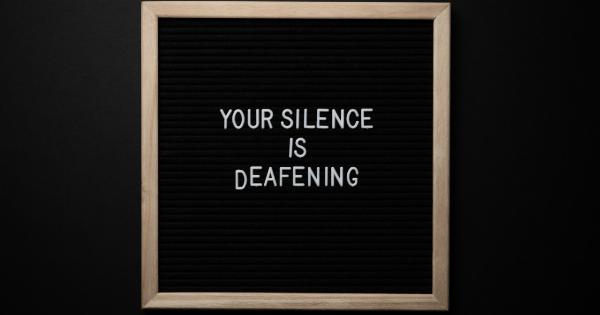Muscle pain can be an uncomfortable and frustrating experience that can make it difficult to perform everyday activities. This pain can stem from a variety of causes, including overuse, injury, or an underlying medical condition.
Fortunately, there are several effective strategies you can use to get rid of muscle pain and prevent future discomfort. In this article, we will discuss some helpful tips to relieve muscle pain.
1. Stretching Exercises
Stretching exercises are a great way to relieve muscle tension and reduce pain. When muscles become tight or strained, stretching can help stretch them out and release the tension. There are several stretching exercises you can do, including:.
- Hamstring stretch
- Quad stretch
- Triceps stretch
- Shoulder stretch
- Calf stretch
To perform these stretches, hold the stretch for 15 to 30 seconds and repeat several times. Stretching regularly can help prevent muscle tightness and reduce your risk of pain and injury.
2. Massage Therapy
Massage therapy is another effective strategy to relieve muscle pain. Massage therapy can help increase blood flow to the affected area and reduce muscle tension.
A professional massage therapist can use various techniques to help relieve muscle pain, including:.
- Deep tissue massage
- Trigger point therapy
- Swedish massage
Regular massage therapy can help improve your range of motion and reduce your risk of muscle pain and injury.
3. Hot and Cold Therapy
Hot and cold therapy can also help relieve muscle pain. Applying heat to the affected area can help increase blood flow and promote healing. You can use a heating pad or take a warm bath to relieve muscle tension.
On the other hand, applying cold therapy can help reduce inflammation and swelling. You can use ice packs or a bag of frozen vegetables to reduce muscle pain.
4. Stay Hydrated
Staying hydrated is another important strategy to reduce muscle pain. Muscles need water to function properly, and dehydration can cause muscle cramps and pain.
Drinking enough water throughout the day can help prevent muscle pain and improve overall health.
5. Rest and Recovery
Proper rest and recovery are essential to prevent muscle pain. Overexertion and overuse can cause muscle strain and pain. It’s important to give your muscles time to rest and recover after physical activity.
Reducing high-impact activities and incorporating low-impact exercises, like yoga or swimming, can help reduce your risk of muscle pain and injury.
6. Anti-inflammatory Medications
If your muscle pain is caused by inflammation, anti-inflammatory medications like ibuprofen and naproxen can help reduce pain and swelling.
However, it’s important to follow the recommended dosage and speak with your doctor before taking any medication.
7. Alternative Therapies
Alternative therapies like acupuncture and chiropractic care can also help reduce muscle pain. These therapies can help reduce muscle tension and improve overall health and wellness.
8. Improve Your Posture
Improving your posture can also help reduce muscle pain. Poor posture can cause muscle strain and tension, leading to pain and discomfort. To improve your posture, try sitting up straight and engaging your core muscles while sitting or standing.
You can also use ergonomic furniture and equipment to help support your posture.
9. Exercise Regularly
Regular exercise can also help prevent muscle pain. Exercise can strengthen your muscles and improve your overall health and wellness. Incorporating exercises that target the affected area can also help reduce pain and discomfort.
However, it’s important to start slowly and gradually increase your intensity to prevent injury.
10. Consult with Your Doctor
If your muscle pain is severe or persistent, it may be a sign of an underlying medical condition. It’s important to speak with your doctor if you’re experiencing chronic or severe muscle pain.
Your doctor can help determine the underlying cause of your pain and develop a treatment plan to alleviate your symptoms.





























